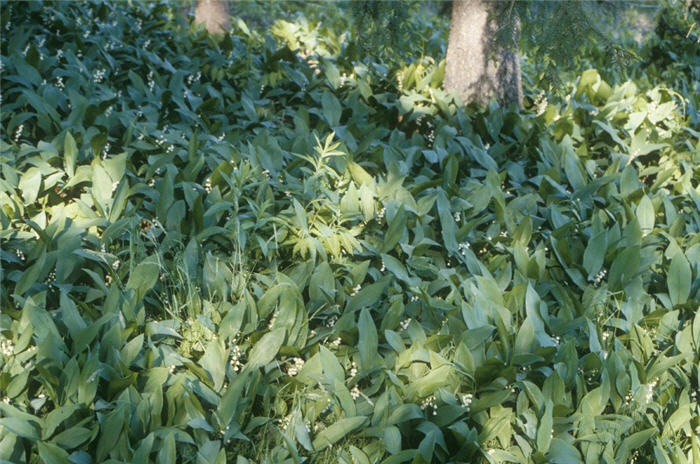| Botanical Name: Convallaria majalis | |
| Common Name: Lily of the Valley |

-
Anatomy
-
Culture
-
Design
Plant Type
Ground cover, Perennial, Bulb
Height Range
Under 1'
Flower Color
White
Flower Season
Spring
Leaf Color
Green, Dark Green
Bark Color
n/a
Fruit Color
Orange
Fruit Season
Fall
Sun
Half, Shade
Water
Medium
Growth Rate
Moderate, Slow
Soil Type
Sandy, Clay, Loam
Soil Condition
Average, Rich, Well-drained, Dry
Soil pH
Neutral, Basic
Adverse Factors
Invasive, Poisonous
Design Styles
English Cottage, Formal, Japanese, Mediterranean, Ranch, Spanish, Native Garden, Woodland
Accenting Features
Fragrance, Showy Flowers, Unusual Foliage
Seasonal Interest
Spring, Summer, Fall
Location Uses
Perennial Border, Shrub Border, Foundation, Patio, Walkways
Special Uses
Cut Flowers, Filler, Mass Planting, Naturalizing, Small Spaces
Attracts Wildlife
n/a
Information by: Stephanie Duer
Photographer: JJ Neilson Arboretum
Photographer: JJ Neilson Arboretum
-
Description
-
Notes
This perennial bulb is ideal in dry shade. Lily of the Valley has very dainty, white, fragrant, bell-shaped flowers around April. The leaves are strap-like, dark, leathery green, and about 9" long and 4" across. In time, the bulbs multiply and spread. A lovely cut flower. An excellent ground cover, even under densely shading trees. Grows about 6 to 12" tall and wide.
Like many other hardy bulbs, Lily of the Valley does best in soils that drain well, have some organic content, and are dry-ish in the summer and fall. Does well in part to full shade. Foliage persists all summer and fall, until a hard frost. All parts of this plant are poisonous if ingested.